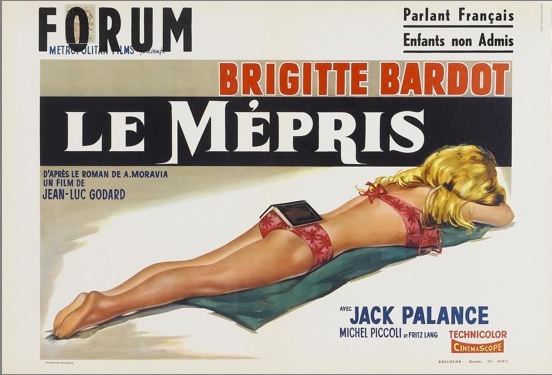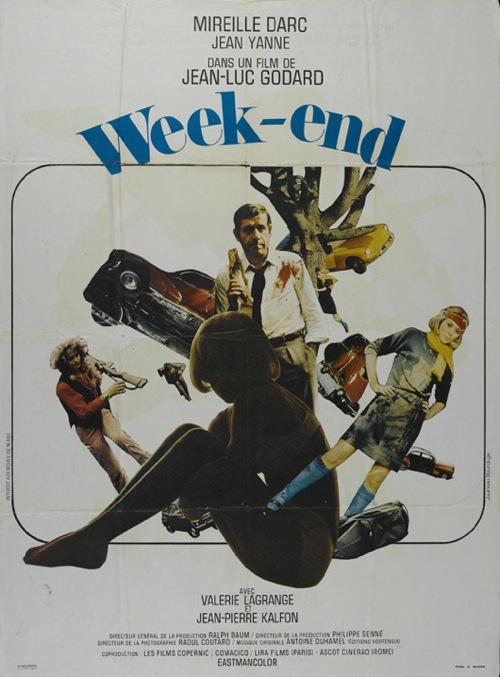Postmodernists: 1924-33
By:
September 23, 2009
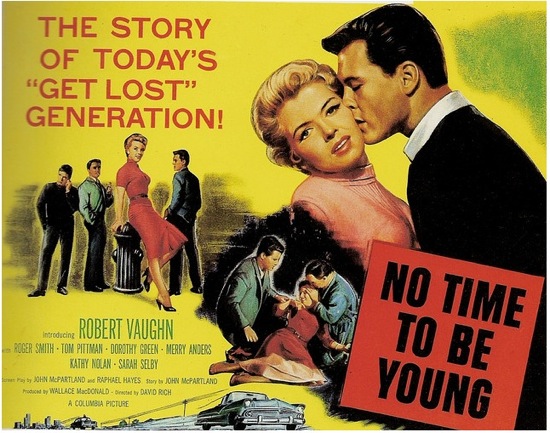
Members of the generational cohort born from 1924-33 were in their teens and 20s during the Forties (1944-53, not to be confused with the the 1940s), and in their 20s and 30s during the Fifties (1954-63). Though this cohort is easily distinguished from their immediate juniors (born 1934-43), the influential generational periodizers William Strauss and Neil Howe have lumped the two distinct cohorts together and dismissively named their own awkward construct the “Silent Generation” (1925-42). Why “silent”? Because after two noisily ideological, discourse-dominating, middlebrow-ized generations (the Partisans, the New Gods), the Postmodernists’ relative imperviousness to Middlebrow, their deep skepticism about its discourse, must have made Middlebrow very nervous.
In a November 1951 story, Time Magazine, Middlebrow’s propaganda machine, opined: “The most startling fact about the younger generation is its silence. With some rare exceptions, youth is nowhere near the rostrum. By comparison with the Flaming Youth of their fathers & mothers, today’s younger generation is a still, small flame. It does not issue manifestoes, make speeches or carry posters.” It’s impossible to read this sort of thing as a lament — why would Time want American youth to rebel? Instead, we should hear in such statements the tone of a complacent, if slightly apprehensive plantation overseer: “It’s quiet… too quiet.”
Time tips its hand when the story suggests why the youth of 1951 (members of the Postmodernist cohort were between 18 and 27, at the time) might feel stifled:
The facts are that the U.S. is a highly organized society, must be, and will get more rather than less organized; that the big corporation is here to stay (and is a progressive instrument of U.S. capitalism). What is discouraging to some observers is not so much that youth has accepted life within the well-padded structure of organized society and big corporations, but that it seems to have relatively little ambition to do any of society’s organizing.
In other words, the Partisans and New Gods built an invisible prison, under Middlebrow’s direction — so why won’t the Postmodernists play along? Why are they acting sullen and resentful, or merely passive and browbeaten? “Never had American youth been so withdrawn, cautious, unimaginative, indifferent, unadventurous — and silent,” William Manchester, the gung-ho New God historian, recounted in 1974. Perhaps it’s because the Postmodernist cohort were able to perceive, however dimly, the bars of their invisible prison. Theirs was a prisoner’s sullen or passive silence.
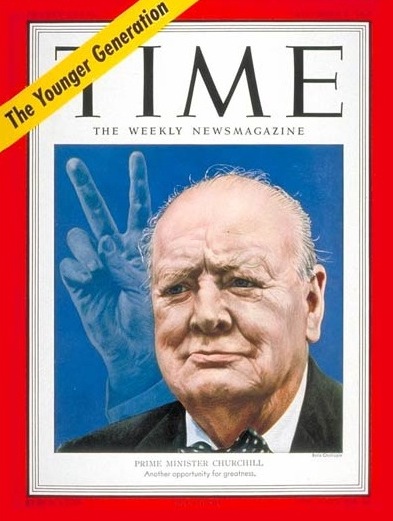
High-, low-, no-, and hilobrow members of the Postmodernist Generation include: Agnès Varda, Alejandro Jodorowsky, Alex Toth, Alison Lurie, Allen Ginsberg, Andy Warhol, Charles Portis, Christopher Lasch, Chuck Berry, Clifford Geertz, Ed Wood, Félix Guattari, Flannery O’Connor, François Truffaut, Frantz Fanon, Gilles Deleuze, Guy Debord, Harvey Kurtzman, Hilary Putnam, Ivan Illich, J. G. Ballard, J.P. Donleavy, Jack Davis, Jacques Derrida, James Brown, Jasper Johns, Jean Baudrillard, Jean-François Lyotard, Jean-Luc Godard, Jerry Lewis, John Ashbery, John Barth, John Cassavetes, John Coltrane, Johnny Cash, Jürgen Habermas, Kenneth Anger, Lenny Bruce, Little Richard, Martin Luther King Jr., Maurice Sendak, Michel Foucault, Miles Davis, Nam June Paik, Noam Chomsky, Paul Feyerabend, Paul Virilio, Peter Sellers, Philip K. Dick, Pierre Bourdieu, Roger Corman, Roman Polanski, Screamin’ Jay Hawkins, Shel Silverstein, Susan Sontag, Sylvia Plath, Ted Hughes, Terry Southern, Umberto Eco, Ursula K. Le Guin, and Wally Wood.
A reminder of my 250-year generational periodization scheme:
1755-64: [Republican Generation] Perfectibilists
1765-74: [Republican, Compromise Generations] Original Romantics
1775-84: [Compromise Generation] Ironic Idealists
1785-94: [Compromise, Transcendental Generations] Original Prometheans
1795-1804: [Transcendental Generation] Monomaniacs
1805-14: [Transcendental Generation] Autotelics
1815-24: [Transcendental, Gilded Generations] Retrogressivists
1825-33: [Gilded Generation] Post-Romantics
1834-43: [Gilded Generation] Original Decadents
1844-53: [Progressive Generation] New Prometheans
1854-63: [Progressive, Missionary Generations] Plutonians
1864-73: [Missionary Generation] Anarcho-Symbolists
1874-83: [Missionary Generation] Psychonauts
1884-93: [Lost Generation] Modernists
1894-1903: [Lost, Greatest/GI Generations] Hardboileds
1904-13: [Greatest/GI Generation] Partisans
1914-23: [Greatest/GI Generation] New Gods
1924-33: [Silent Generation] Postmodernists
1934-43: [Silent Generation] Anti-Anti-Utopians
1944-53: [Boomers] Blank Generation
1954-63: [Boomers] OGXers
1964-73: [Generation X, Thirteenth Generation] Reconstructionists
1974-82: [Generations X, Y] Revivalists
1983-92: [Millennial Generation] Social Darwikians
1993-2002: [Millennials, Generation Z] TBA
LEARN MORE about this periodization scheme | READ ALL generational articles on HiLobrow.
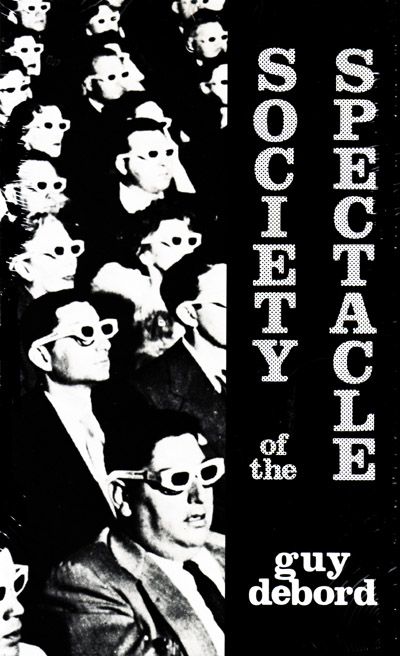
The Postmodernist cohort came of age during the early Cold War era. The Soviet dominance over eastern Europe and the threat of apocalyptic nuclear war made it an anxious time; but during the Forties and Fifties, High Middlebrow — working closely with Highbrow (for example, the collaboration between the high-middlebrow American Congress for Cultural Freedom and the highbrow Congress for Cultural Freedom, both of which were funded by the CIA) — successfully encouraged most Westerners to keep the faith in fixed, universal categories, and in certainty. The most interesting figures of the 1924-33 cohort would diagnose and articulate a new sociocultural condition: one in which fixed, universal categories and certainty were troubled and replaced by difference, process, anomaly.
An astonishing number of philosophers, scientists, and critics born from 1924-33 — including Jean-François Lyotard, Paul K. Feyerabend, Benoit Mandelbrot, Michel Foucault, Paul Baran, Clifford Geertz, Hilary Putnam, Jacques Derrida, Jean Baudrillard, Pierre Bourdieu, Luce Irigaray, Gilles Deleuze, Félix Guattari, Michel de Certeau, Louis Marin, Christian Metz, Guy Debord, Hélène Cixous, Umberto Eco, Paul Virilio, J. Hillis Miller, Geoffrey Hartman, and Richard Rorty — argued against scientific rationality and unitary theories of truth and progress; instead, they emphasized the ambivalence, indeterminacy, and undecidability of things. Lyotard, who was fiercely critical of many of the “universalist” claims of the Enlightenment, named a persistent opposition to universals, meta-narratives, and generality the “postmodern condition”… hence the moniker of this generation. NB: Susan Sontag may be an honorary Anti-Anti-Utopian.
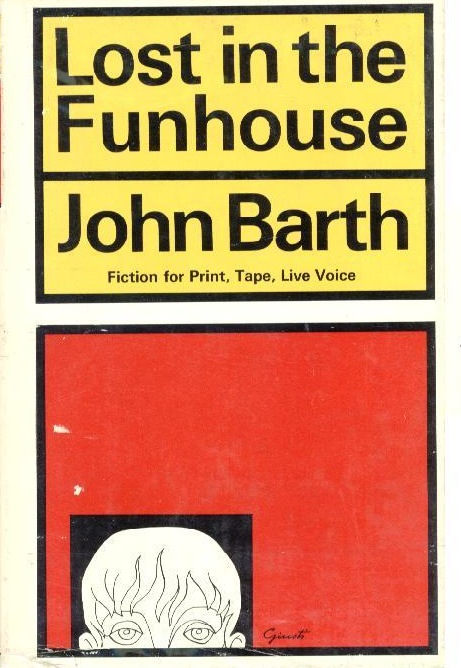
Meanwhile, the majority of those authors who pioneered what has been called “postmodern” fiction were also born from 1924-33: John Barth, Donald Barthelme, Robert Coover, William Gass, John Hawkes, Gilbert Sorrentino, Thomas Bernhard, J.G. Ballard, Philip K. Dick, E.L. Doctorow, Milan Kundera, Manuel Puig, plus honorary Postmodernists Italo Calvino, William Gaddis, and Kurt Vonnegut. NB: Not every novelist born from 1924-33 is stylistically a postmodernist; see note below about Updike, Morrison, and McCarthy. As a group, postmodern authors discovered and celebrated the eclecticism and hybridity lurking just beneath the modernist illusion of conceptual unity and institutional integrity. In their writings we find, e.g., the author as character; plots which are self-contradicting or which blur reality and fiction; form and language being disrupted or played with; and fiction that overtly references other fictional works.
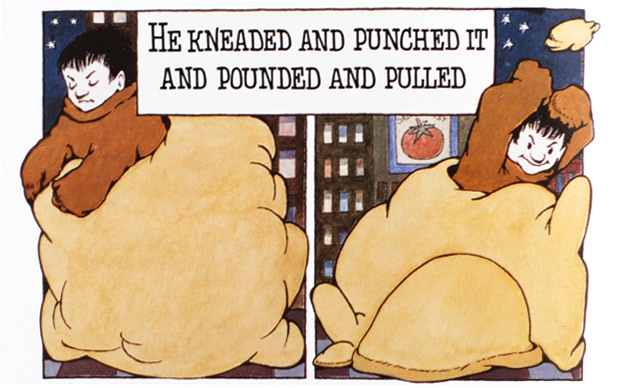
Only a diehard agent of Middlebrow could fail to be convinced by the preceding paragraphs! The 1924-33 cohort is a distinct and well-defined one. Even non-postmodern members of the Postmodernist Generation grew up in a world in which two world wars, the Holocaust, the Stalinist Gulag, and Hiroshima demonstrated the carnage and destruction that the modernist rhetoric of progress is capable of creating. If their elders (the Partisans, the New Gods) abandoned utopianism (i.e., the dream of a momentous, rational, all-encompassing change in the human condition, achieved through the revolutionary transformation of society), then Postmodernists went further, and grew skeptical about Highbrow’s either/or (utopian) claim that Modernity and the Enlightenment are archetypes of unmitigated progress.
The most popular non-postmodern authors from this generation — John Updike, Toni Morrison, and Cormac McCarthy — agree with their postmodern peers that something’s gone awry with the technologically advanced, prosperous, contented, triumphalist liberal democracy that is postwar America; they lack (and mock/mourn) the virile can-do spirit of the New Gods; and their protagonists are beset with anxiety-provoking tensions, uncertainties, and paradoxes that can never be resolved. NB: Philip Roth (whose The Counterlife is considered postmodern) is an honorary Anti-Anti-Utopian.
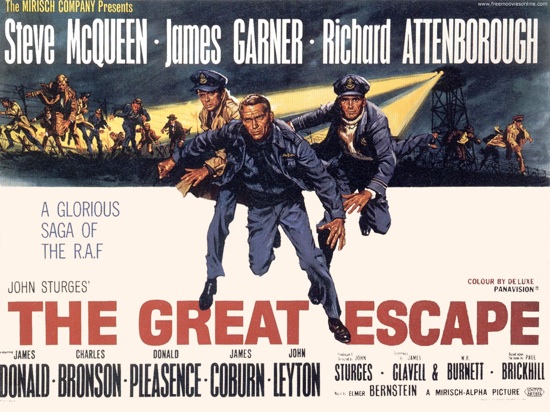
A generation whose most interesting members struggled to destabilize and de-essentialize all orthodoxies might certainly look “silent” when compared with the Partisans and New Gods. From the Seventies onward, Postmodernists would be tempted by High Middlebrow’s compelling compromise: the neoconservative both/and notion that Modernity and Enlightenment aren’t perfect, but they’re less imperfect than the alternatives. Nobrow offered the neither/nor consolations of irony, absurdism, and a kind of irreligious apocalypticism. HiLobrow insisted on something altogether more uncanny and eccentric: progressive, even utopian ideals and irony, absurdism, apocalypticism. Impossible! Nevertheless. The “silence” of these elder members of the so-called Silent Generation is the strategic silence of sappers and miners, undermining the enemy’s fortress; or of prisoners tunneling their way to freedom.
Some members of this cohort memorably portrayed jailbreak artists, or imprisoned souls who found ways to survive. The Great Escape’s Steve McQueen, James Garner, James Coburn, and David McCallum; Papillon’s McQueen; Escape from Alcatraz’s Clint Eastwood; Cool Hand Luke’s Paul Newman; The Hill’s Sean Connery; The Fugitive’s David Janssen; The Prisoner’s Patrick McGoohan; not to mention Stir Crazy’s Gene Wilder and Johnny “Folsom Prison Blues” Cash — are all Postmodernists.
I don’t find Strauss and Howe’s justification for their identification of a “Silent Generation” convincing, but all too many journalists and historians do. During the most recent presidential campaign, New York Times Book Review editor Sam Tanenhaus argued in the NYT’s Week in Review section that an understanding of “generational distinctions” explains why no American born in the 1930s has been elected president. (This is a key point that Strauss and Howe make in their 1991 book, Generations: members of the so-called Silent Generation make good facilitators, technocrats, and top presidential aides — but not presidents.) It might be, Tanenhaus writes, that “Americans born in the 1930s lack the particular qualities we look for in our national leaders” — because “they were the ‘silent generation,’ content to be guided by their elders.” (As noted elsewhere in this post, I disagree with that notion.)
Tanenhaus wanted to argue that John McCain (born 1936) does not exhibit the same weaknesses that the other so-called Silents who’ve mounted presidential campaigns — Ted Kennedy, Mike Dukakis — have supposedly exhibited. Unlike these uninspired and uninspiring Democrats, Tanenhaus insists, the Republican McCain somehow “defies the stereotype of the ‘silent generation.'” How does he do so, exactly? Tanenhaus doesn’t say — he only suggests that McCain is “skeptical toward the very expectations he stoically fulfills.” (Somehow, this strikes me as an apt description of me of William Shatner’s acting style; Shatner, of course, is also a Postmodern.) Tanenhaus isn’t making a generational case, here; he merely suggests that McCain is a semi-idealistic, semi-cynical middlebrow, while Kennedy and Dukakis are idealistic highbrows.
Note, however, that according to my periodization scheme, Kennedy and Dukakis are members of the Postmodern Generation, while McCain (not to mention presidential hopefuls Ralph Nader, Jesse Jackson, John Kerry, Larry Flynt, and Colin Powell) in the succeeding one: the Anti-Anti-Utopian Generation. Postmodernists can get elected president. The question is: why can’t Anti-Anti-Utopians get elected? (We’ll revisit this riddle, in the next installment of this series.)

Middlebrow journalists are fanatically loyal to Strauss and Howe’s periodization scheme, so it’s too much to expect Tanenhaus to understand that the Thirties run from 1934-43. Too bad, because my scheme helps us comprehend the generational difference between two presidents who were born in 1924 — on the cusp between the New Gods and the Postmodernists.
George H.W. Bush, at 18 the youngest naval aviator in US history to that date, is a gung-ho honorary New God. However, because he was born on the cusp of the Postmodernist Generation, he is less gung-ho than other New Gods; in fact, it was Bush who described Reagan’s High Middlebrow theory of trickle-down economics as “voodoo economics.” Jimmy Carter, meanwhile, is a Postmodernist, ever alert to ambivalence and indeterminacy and undecidability — which is why middlebrows consider him an uninspiring leader. Like Bush, however, Carter was born between two generations. In a famous 1979 speech, he spoke of “a fundamental threat to American democracy…. It is a crisis of confidence. It is a crisis that strikes at the very heart and soul and spirit of our national will. We can see this crisis in the growing doubt about the meaning of our own lives and in the loss of a unity of purpose for our nation.” As a Postmodernist, Carter embraces doubt; as a New God, he rejects it.
No surprise: middlebrows consider neither Bush nor Carter “great” presidents. If they admire anything about Bush or Carter, it’s their New God-like qualities; if they scorn anything about the two, it’s their Postmodernist-like qualities. The New Gods were a thoroughly Middlebrow-controlled generation. The Postmodernists are an anti-Middlebrow generation.
A quick note about Neo-Dadaists and Pop Art.
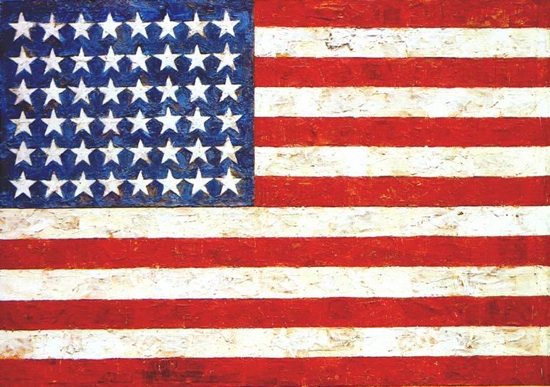
Neo-Dada artists Jasper Johns, Robert Rauschenberg, Claes Oldenburg, and Yves Klein were born between 1924-33. Reacting against the highbrow aims of Abstract Expressionism (i.e., the search for a universal truth that might transcend political, social, ethnic and religious differences), Neo-Dadaists pioneered ironic/absurdist postmodern art, characterized by themes and techniques drawn from advertising, comic books, and other areas of pop culture.
Other Neo-Dada artists born during this period include: Lee Bontecou, John Chamberlain, Bruce Conner, Edward Kienholz, Robert Morris, Nam June Paik, and Fluxus artists George Maciunas, Allan Kaprow, and Yoko Ono (who is an honorary Anti-Anti-Utopian).
NB: Rauschenberg was the creator of the most notorious practical joke in art history, “Erased de Kooning Drawing” (1953), which poked fun at the brooding seriousness and majestic aspirations of Abstract Expressionists like de Kooning. Rauschenberg didn’t just theorize about replacing fixed, universal categories and certainty with difference, process, and anomaly — he did it.
In America, Pop Art — which was influenced by the Neo-Dadaists — used impersonal, mundane reality, irony, and parody, not to mention hard-edged composition and representational art, to defuse the personal symbolism and “painterly looseness” of Abstract Expressionism.
However, Pop Art wasn’t Dada-esque in the anarchic, hilobrow sense of the term; instead, Pop Art’s brand of postmodern practice was indicated a detached affirmation of the artifacts of mass culture. Honorary Postmodernist Roy Lichtenstein (born in 1923) parodied comic-book art, but fetishized it at the same time.
Much the same thing goes for Andy Warhol, Tom Wesselmann, Robert Indiana, James Rosenquist, and other Pop Artists born from 1924-33, who presented icons of pop culture and mass media in a nobrow way — i.e., without praise or condemnation, and by means of the same commercial techniques used by the media from which the iconography was borrowed. Middlebrow suborned nobrow Pop Art immediately.
The difference between the Neo-Dadaists and Pop Art may come to the difference between engaged and disengaged irony. As I once wrote in the pages of Hermenaut, many years ago:
We here at Hermenaut are interested [in] a very particular irony — one which is philosophically detached but not emotionally disaffected or passive; perhaps humorously trivial but never emptily frivolous. Once this irony is understood, whether you use camp to describe the construction of the self or the construction of a Las Vegas supermarket, we’ll at least be able to communicate. Yes, the real hurdle to understanding camp lies in our culture’s ongoing inability to perceive irony as being anything but an emotionally disengaged, passive, “lite” reaction to a world gone sour; without a better appreciation of the rich emotional and creative possibilities of irony, camp will forever be regarded as a clique-ish, “anti-hip” hipsters’ put-on — which is not camp, but that which is inferior to camp in even its most degraded form: cheese.
Obviously, this is not the place to discuss camp, cheese, and engaged vs. disengaged irony. However, please note that at HILOBROW we prefer the term quatsch to cheese, though we’re pretty sure they describe the same things.
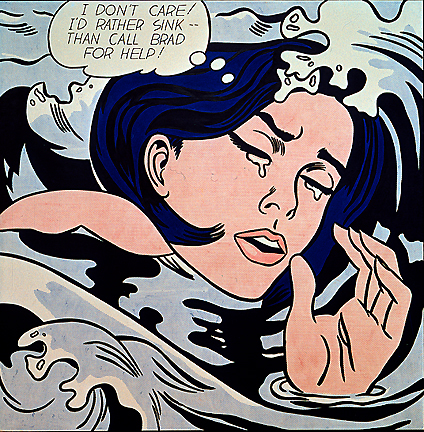
ALSO: What do the satirical but largely unpolitical MAD Magazine and the highly political Situationist International have in common? They combined the sensibilities and worldviews of New Gods and Postmoderns; the productive tension between these dissimilar generational dispositions is what made those phenomena so extraordinary.
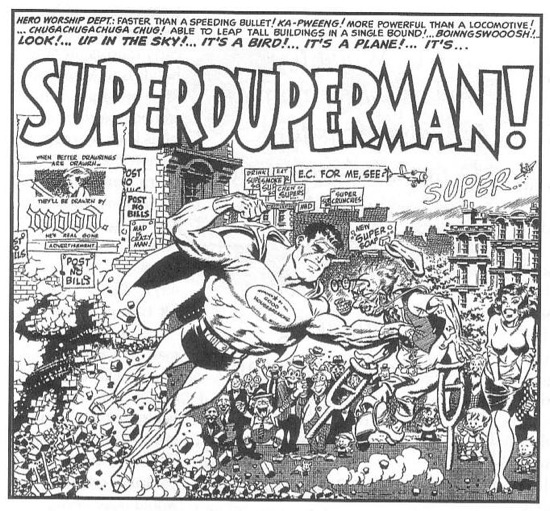
MAD, founded in 1952, was edited and created by New Gods (Will Elder, John Severin, Dave Berg, Al Jaffee, William Gaines) and Postmodernists (Wally Wood, Harvey Kurtzman, Jack Davis, Don Martin). Read more about postmodern humor here.
The most influential members of the Situationist International, founded in 1957, were Guy Debord, Michèle Bernstein, Ivan Chtcheglov, and Alexander Trocchi (Postmodernists); and Asger Jorn, Jørgen Nash, and Constant Nieuwenhuys (New Gods). Attila Kotányi, who edited the journal Situationniste Internationale, was born in the cusp year of 1924 — more research is needed before we can assign him to one of these two generations. Situationists Ralph Rumney (one of the co-founders of the London Psychogeographical Association) and Belgian philosopher Raoul Vaneigem are honorary Postmodernists (born 1934).
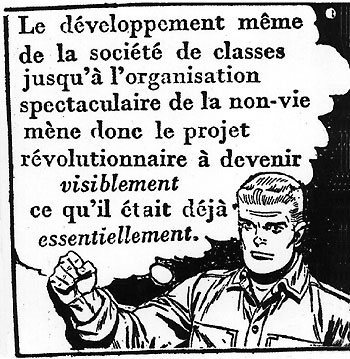
No room, here, to get into the many points of similarity between the programs of MAD and Situationism; the two illustrations shown here will have to suffice. As for the difference between MAD and Situationism, it may — again — have much to do with the distinction between engaged and disengaged modes of irony. I’m going to go out on a limb and suggest that MAD was a nobrow production, while Situationism was hilobrow. When thinking about the “postmodern” generally, or the “silence” of the so-called Silent Generation, it’s imperative to keep that distinction in mind.
I should add, here, that Nobrow is always very impressive — and quite similar to HiLobrow. I don’t mean to be dismissive of nobrow productions like MAD or Pop Art; I enjoy them, very much! Nobrow can be very inspiring, and certainly nobrow productions serve to alert us to the limitations of the heimlich High/Low/Anti-High/Anti-Low matrix. Nobrow takes us to the edge of the abyss, but no further. As a result, it is all too easily suborned by Middlebrow.
To paraphrase a Civil Rights anthem, “The only thing [Nobrow] done wrong/Stayed in the wilderness a day too long./Keep your eyes on the [HiLobrow] prize/Fight on, fight on.”
A note on Nouvelle Vague films, which — like many of the most important works of the Postmodernist Generation — somehow combined leftist politics with existentialist absurdism.
Jean-Luc Godard, François Truffaut, Claude Chabrol, Jacques Rivette, Agnès Varda, and Jacques Demy are members of the Postmodernist Generation. Although not a formally organized movement, France’s New Wave filmmakers self-consciously rejected classical cinematic form. Many engaged in their work with the social and political upheavals of the era, making their radical experiments with editing, visual style and narrative — like the famous traffic jam sequence in Godard’s 1967 film Week End — part of a general break with the conservative paradigm.
A 1954 article in Cahiers du cinéma by Truffaut attacked La qualité française and was the manifesto for “la politique des Auteurs” — which Andrew Sarris (also a member of the Postmodernist Generation) later termed the “auteur theory.” Chabrol’s Le Beau Serge (1958) is often credited as the first New Wave feature. Truffaut’s The 400 Blows (1959) and Godard’s Breathless (1960) were critical and financial successes, and made the New Wave famous.
NB: Though considered part of the French New Wave, Éric Rohmer and Alain Resnais are older. In 1963, when Rivette replaced Rohmer as editor of Cahiers du cinéma, the journal shifted political and social concerns and paid more attention to the non-Hollywood cinema. (Note the timing: 1963 is a cusp year, according to my generational/epochal periodization scheme.)
Meet the Postmodernists:
HONORARY POSTMODERNISTS: Italo Calvino (Italian author, Invisible Cities, If on a winter’s night a traveler), Roy Lichtenstein (all born 1923). Also: loathe as I am to make exceptions, let’s do it for postmodern authors William Gaddis (JR) and Kurt Vonnegut (Slaughterhouse Five), who were almost born in ’23: December 29, 1922; and November 11, 1922, respectively.
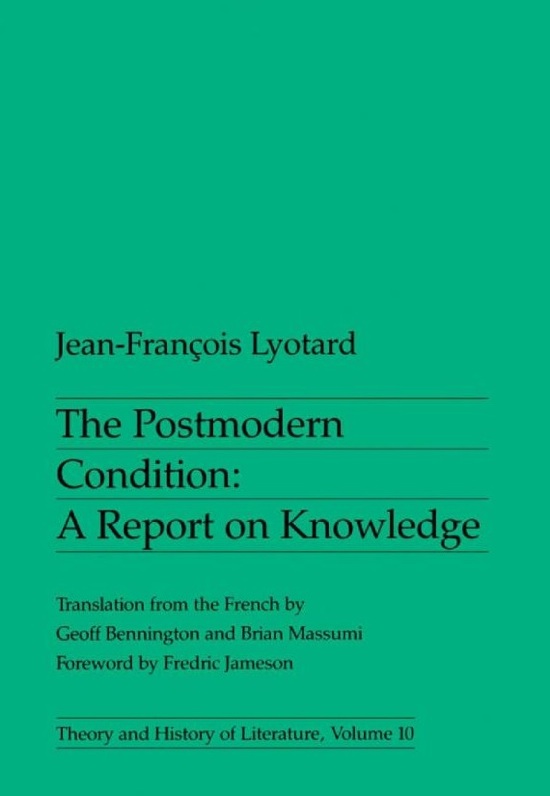
1924: Jean-François Lyotard (philosopher, The Postmodern Condition), Paul Feyerabend (postmodern philosopher of science, Against Method), Eduardo Paolozzi (pioneering Pop artist), Ed Wood (director, Plan 9 From Outer Space), E.P. Thompson (historian, The Making of the English Working Class), Clarence “Gatemouth” Brown (blues, R&B musician), Max Roach (jazz drummer), Benoit Mandelbrot (fractal mathematician), Benny Hill (comic), Tony Hancock (comic), Terry Southern (novelist, Dr. Strangelove), Lauren Bacall (actor), William H. Gass (postmodern novelist, The Tunnel), Harvey Kurtzman (founding editor, MAD magazine), William Sloane Coffin (civilly disobedient chaplain), Rod Serling (creator of The Twilight Zone), Jack Davis (cartoonist, EC and MAD), James Baldwin (novelist, Go Tell It on the Mountain, Herk Harvey (horror director), Truman Capote (novelist, In Cold Blood), Jimmy Carter (39th US president), Jack Chick (anti-Catholic comics publisher), Doris Day (actor), Paul Fussell (historian, The Great War and Modern Memory), Alexander Haig (US Secretary of State), Lloyd Alexander (novelist, The Chronicles of Prydain), Lee Iacocca (Chrysler Corporation), Don Knotts (Barney Fife on The Andy Griffith Show), Sidney Lumet (director, Dog Day Afternoon), Grace Metalious (novelist, Peyton Place), Al Neuharth (founder of USA Today), Carroll O’Connor (Archie Bunker in All in the Family), Bud Powell (seminal bop pianist and composer), William Rehnquist (US Chief Justice), Nipsey Russell (comic), Phyllis Schlafly (opponent of women’s liberation), Sonny Stitt (jazz saxophonist), Yma Sumac (vocalist), Sarah Vaughan (singer), Dinah Washington (singer), William Webster (FBI director, CIA director). HONORARY NEW GODS: Marlon Brando, George H.W. Bush, Lee Marvin (actor, The Man Who Shot Liberty Valance), Rocky Marciano (undefeated heavyweight boxer), Audie Murphy (war hero turned cowboy actor).
1925: Gilles Deleuze (postmodern philosopher), Michel de Certeau (postmodern, yet religious scholar), Robert Venturi (postmodern architect), Robert Altman (Director, Nashville), George Barris (King of Kustomizers), Lenny Bruce (comic), Frantz Fanon (psychiatrist, Black Skin, White Masks), John Hawkes (postmodern author, The Lime Twig), Al Feldstein (editor of MAD), Alexander Trocchi (Scottish novelist, Situationist), Edward Gorey (cartoonist, Amphigorey), Flannery O’Connor (author, A Good Man Is Hard To Find), Russell Hoban (author), Robert Rauschenberg (Neo-Dadaist sculptor and painter), Peter Sellers (actor), Pierre Boulez (modern composer and conductor), William F. Buckley (National Review), Richard Burton (actor), Charlie Byrd (jazz musician), Scott Carpenter (Mercury astronaut), Johnny Carson (longtime host of Tonight Show), Carlos Castaneda (The Teachings of Don Juan), Robert Cormier (author, I Am the Cheese), Tony Curtis (actor, Some Like It Hot), Sammy Davis, Jr. (singer), Mike Douglas (The Mike Douglas Show), Medgar Evers (civil rights activist murdered in 1963), Merv Griffin (The Merv Griffin Show and Jeopardy), Bill Haley (musician, “Rock Around the Clock”), Larry Harmon (Bozo the Clown), Harry Harrison (SF novelist), Nat Hentoff (critic, The Jazz Life), Rock Hudson (actor), George Kennedy (actor), Robert F. Kennedy (politician), B. B. King (King of the Blues), Kenneth Koch (poet), Jack Lemmon (actor, The Odd Couple), Elmore Leonard (crime novelist), Malcolm X (activist), Yukio Mishima (author, The Sea of Fertility), Paul Newman (actor), Donald O’Connor (actor), Sam Peckinpah (breakthrough director of ultraviolent films), Oscar Peterson (jazz musician, maharajah of the keyboard), Pol Pot (leader of the Khmer Rouge), Zoot Sims (tenor and soprano saxophonist), Jimmy Smith (jazz musician, master of the Hammond B3 organ), Roger Smith (General Motors), Rod Steiger (actor), William Styron (novelist, The Confessions of Nat Turner), Margaret Thatcher (UK Prime Minister), Mel Tormé (The Velvet Fog), Lee Van Cleef (actor), Dick Van Dyke (actor), Gore Vidal (author), Brian Aldiss (SF author).

1926: Michel Foucault (philosopher, History of Sexuality), Paul Baran (scientist, early networking pioneer), Chuck Berry (singer), Stanley Cavell (philosopher), John Berger (English postmodern novelist, art critic, G), John Coltrane (jazz musician), Roger Corman (director/producer), Miles Davis (jazz musician), J. P. Donleavy (novelist, The Ginger Man), Clifford Geertz (anthropologist), Allen Ginsberg (poet, Howl!), Ivan Illich (philosopher, Deschooling Society), Jerry Lewis (comic, actor, director), Paul Blackburn (poet), Alison Lurie (author of campus novels), Hilary Putnam (philosopher, Philosophy of Mind), Don Rickles (comic), Jim Bohlen (activist, transformed Greenpeace into international organization), Don Adams (Maxwell Smart on Get Smart), A.R. Ammons (poet), Poul Anderson (SF & Fantasy author), Tony Bennett (singer), Robert Bly (poet), Mel Brooks (director, Blazing Saddles), R. L. Burnside (musician), Neal Cassady (Beat hero), Fidel Castro (dictator of Cuba), James S. Coleman (sociologist, Foundations of Social Theory), Robert Creeley (poet, founded Black Mountain Review), Dario Fo (Italian playwright), John Fowles (novelist, The French Lieutenant’s Woman), Shecky Greene (comic), Alan Greenspan (economist), Andy Griffith (actor, The Andy Griffith Show), Gus Grissom (astronaut), Fred Gwynne (Herman on The Munsters), Hugh Hefner (founder, Playboy), Curtis Harrington (horror director), Klaus Kinski (actor, Nosferatu the Vampyre), Ray Price (country musician), Tim LaHaye (author, Left Behind series), Cloris Leachman (actor), Harper Lee (novelist, To Kill A Mockingbird), Robert Jay Lifton (psychiatrist), Ruth Asawa (artist), George Martin (Beatles producer), Richard Matheson (SF author), James Merrill (poet), Marilyn Monroe (actor), Leslie Nielsen (actor, Airplane!), Frank O’Hara (poet), Harry Dean Stanton (actor, Repo Man), Charles Van Doren (won the rigged game show Twenty-One), Richard Yates (novelist, Revolutionary Road), Gil Kane (cartoonist, Green Lantern), Joe Kubert (cartoonist, Sgt. Rock, Hawkman).
1927: John Ashbery (poet, Self-Portrait in a Convex Mirror), Wally Wood (cartoonist, EC and MAD), Allan Kaprow (Neo-Dadaist artist, performance art pioneer), Edward Abbey (author, Desert Solitaire), David Markson (postmodern author, Wittgenstein’s Mistress), Leszek Kolakowski (Polish refugee philosopher), Harry Belafonte (Calypso singer, activist), Patti Page (singer), Edward Kienholz (Neo-Dadaist installation artist), Erma Bombeck (newspaper columnist), Otis Chandler (publisher of the L.A. Times), Cesar Chavez (labor leader), Roy Cohn (Joseph McCarthy’s henchman), John Chamberlain (Neo-Dada artist), Gordon Cooper (Mercury 7 and Gemini 5 astronaut), Midge Decter (neoconservative maven), Steve Ditko (cartoonist, objectivist), Peter Falk (played Detective Columbo), Bob Fosse (choreographer), Stan Getz (jazz tenor saxophonist), Günter Grass (German novelist, The Tin Drum), Samuel P. Huntington (author, The Clash of Civilizations), Antonio Carlos Jobim (musician), Daniel Keyes (novelist, Flowers for Algernon), Eartha Kitt (singer, played Catwoman), Peter Matthiessen (novelist), W. S. Merwin (poet), Marvin Minsky (father of Artificial Intelligence), Roger Moore (played James Bond), Daniel Patrick Moynihan (neocon politician), Gerry Mulligan (jazz baritonist), Si Newhouse, Jr. (chairman of Condé Nast), George Plimpton (author, edited Paris Review), Sidney Poitier (actor), Ken Russell (director, Altered States), Mort Sahl (comic), George C. Scott (actor, Patton), Neil Simon (playwright, The Odd Couple), Carl Switzer (Alfalfa in Our Gang), Paul Volcker (economist).
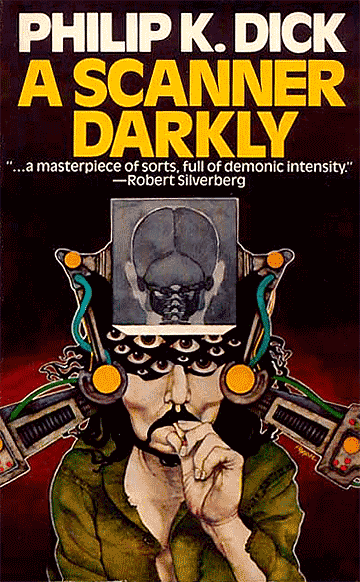
1928: Philip K. Dick (postmodern SF novelist), J. Hillis Miller (postmodern literary critic), Andy Warhol (postmodern artist, Pop Art movement), Noam Chomsky (linguist, dissident intellectual), Cy Twombly (graffiti artist), Cannonball Adderley (alto sax blower), Agnès Varda (director, Cleo from 5 to 7), Yves Klein (Neo-Dadaist artist), Maurice Sendak (author-illustrator, Where The Wild Things Are), Alex Toth (cartoonist, creator of Space Ghost), Edward Albee (playwright, Who’s Afraid of Virginia Woolf?), John Stewart Bell (Bell’s theorem of quantum physics), Andrew Sarris (film critic, coined the phrase “auteur theory”), Hubert Selby (author, Requiem for a Dream), James Coburn (actor), Frank Frazetta (painted Conan paperback covers), Serge Gainsbourg (singer/songwriter), Gabriel García Márquez (One Hundred Years of Solitude), Carlos Fuentes (novelist), James Garner (Jim Rockford on Rockford Files), Che Guevara (revolutionary), Maya Angelou (poet), Donald Hall (poet), Michael Harrington (activist, The Other America), Robert Indiana (creator of the middlebrow “LO/VE” sculpture), Hilton Kramer (high-middlebrow or anti-lowbrow critic, The New Criterion), Stanley Kubrick (director), Tom Lehrer (comedic songwriter), Philip Levine (poet), Fats Domino (musician), Jim Lovell (astronaut, Apollo 13), Patrick McGoohan (Number Six on The Prisoner), Ennio Morricone (composer), Cynthia Ozick (author, critic), Alan J. Pakula (director), Robert Pirsig (author, Zen and the Art of Motorcycle Maintenance), Jacques Rivette (director, La Belle Noiseuse), Nicolas Roeg (director, The Man Who Fell to Earth), Fred Rogers (Mister Rogers), Anne Sexton (poet), Alison Smithson (New Brutalist architect), Karlheinz Stockhausen (influential avant-garde composer), Shirley Temple (actor), Roger Vadim (director, Barbarella), Elie Wiesel (author, anti-Holocaust and human-rights activist).
1929: Jean Baudrillard (postmodern philosopher, Simulacra and Simulation), Chet Baker (jazz trumpeter), Alejandro Jodorowsky (postmodern filmmaker, occultist, comic book author), Chuck Barris (postmodern host of The Gong Show), John Cassavetes (actor, director), Len Deighton (lowbrow novelist), Jules Feiffer (cartoonist), Frank Gehry (postmodern architect), Ursula K. Le Guin (postmodern SF novelist, The Left Hand of Darkness), Jürgen Habermas (philosopher, The Theory of Communicative Action), Geoffrey Hartman (postmodern critic, The Unmediated Vision), Screamin’ Jay Hawkins (musician), Martin Luther King Jr. (pacifist civil rights activist), Milan Kundera (Czech postmodern author, The Unbearable Lightness of Being), Sergio Leone (writer/director of spaghetti westerns), Staughton Lynd (historian of ideas), Joe Meek (innovative record producer), Bob Newhart (comic), Claes Oldenburg (Neo-Dadaist sculptor), Robert B. Silvers (editor, The New York Review of Books), George Steiner (critic, After Babel), Edward O. Wilson (father of Sociobiology), Yasser Arafat (Palestinian leader, former terrorist), Hal Ashby (Director, Harold and Maude), Ed Asner (actor), Burt Bacharach (composer of lounge music), Edgar Bronfman, Sr. (CEO of Seagram’s), Gilbert Sorrentino (postmodern author, Mulligan Stew), June Carter Cash (Country singer, wife of Johnny Cash), Dick Clark (TV personality), Robert Coles (psychiatrist), Mort Drucker (Mad Magazine illustrator), Bill Evans (jazz pianist), Oriana Fallaci (journalist), Anne Frank (victim); Berry Gordy (founder of Motown Records), Lee Hazlewood (music producer, musician), Audrey Hepburn (actor), Peter Higgs (physicist, Higgs boson and Higgs field), John Hollander (poet), Carolyn Jones (Morticia on The Addams Family), Norton Juster (author, The Phantom Tollbooth), Grace Kelly (actress, American-born Princess of Monaco), Ronnie Biggs (criminal), X. J. Kennedy (poet), Sid Krofft (Film/TV Producer, H.R. Pufnstuf, Land of the Lost), Ira Levin (novelist, Rosemary’s Baby), Jacqueline Kennedy Onassis (First Lady, fashion icon), Chaim Potok (novelist), William Safire (middlebrow language maven), Max von Sydow (actor), Cecil Taylor (avant-garde jazz pianist), Barbara Walters (journalist), Bernard Williams (leading moral philosopher), Milton Glaser (graphic designer), Thom Gunn (poet).

1930: Jacques Derrida (postmodern philosopher), Félix Guattari (postmodern psychotherapist and philosopher), John Barth (postmodern novelist, Lost in the Funhouse, Giles Goat-Boy), Kenneth Anger (pioneer avant-garde filmmaker), Jasper Johns (Neo-Dadaist painter), J. G. Ballard (postmodern SF author, Crash), Harold Bloom (critic), Pierre Bourdieu (anthropologist, Distinction: A Social Critique of the Judgment of Taste), Claude Chabrol (director, La Cérémonie), Ray Charles (musician), Ornette Coleman (free jazz innovator), Jesus Franco (director, Vampyros Lesbos), Jean-Luc Godard (director, Vivre sa Vie), Don Ho (Hawaiian crooner), Ted Hughes (poet), Anton LaVey (founder, Church of Satan), Harry Mathews (author, My Life in CIA), Joseph McElroy (postmodern author, Women and Men), Sonny Rollins (tenor sax master), Shel Silverstein (renaissance man, Where the Sidewalk Ends), Chinua Achebe (novelist, Things Fall Apart), Buzz Aldrin (astronaut), Allan Bloom (high middlebrow or anti-lowbrow philosopher, The Closing of the American Mind), E.L. Konigsburg (YA author), The Big Bopper (musician), Marion Zimmer Bradley (lowbrow SF & Fantasy author), Jimmy Breslin (columnist), Warren Buffett (billionaire), Sean Connery (actor), Pete Conrad (astronaut), Gregory Corso (Beat poet), Clint Eastwood (actor), Stanley Elkin (novelist), Robert Evans (film/TV producer), Bob Guccione (founder, Penthouse magazine), Gene Hackman (actor), Buck Henry (comic), Clifford Irving (hoaxer), G. Gordon Liddy (Watergate criminal, talk-show-host), Frank McCourt (author, Angela’s Ashes), Steve McQueen (actor), Odetta (Queen of American Folk Music), H. Ross Perot Business (eccentric presidential candidate), Harold Pinter (playwright), Norman Podhoretz (middlebrow/neocon author, propagandist), John Romita (comic book artist), Gena Rowlands (actor), Fred Saberhagen (SF novelist, Berserker series), Wilfrid Sheed (author, Office Politics), Gary Snyder (poet), Stephen Sondheim (middlebrow composer), George Soros (Hungarian financial speculator), Thomas Sowell (conservative economist), Derek Walcott (poet), Frederick Wiseman (documentarist).
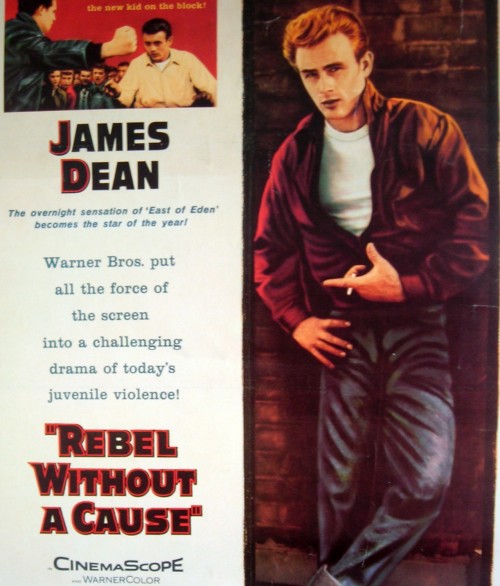
1931: James Dean (actor, pop culture icon), Guy Debord (French postmodern theorist, activist, Situationist), Richard Rorty (postmodern philosopher, Philosophy and the Mirror of Nature), Donald Barthelme (postmodern author, 60 Stories), Algis Budrys (SF author, Rogue Moon), Sam Cooke (soul singer), E.L. Doctorow (postmodern author, City of God); George Jones (Country singer), Tom Laughlin, (actor, Billy Jack), George Maciunas (founder of Fluxus), Tom Wesselmann (Pop Art artist), Robert Morris (Neo-Dadaist artist), Lee Bontecou (Neo-Dada artist), Charles Taylor (philosopher, Sources of the Self), Tom Wolfe (high-middlebrow New Journalist), Thomas Bernhard (Austrian postmodern playwright and novelist, The Loser), John le Carré (author), Ram Dass (guru), Angie Dickinson (actor), Robert Duvall (actor), Anita Ekberg (actor), Daniel Ellsberg (Pentagon Papers source), William Goldman (author), Mikhail Gorbachev (final leader of Soviet Union), Bill Graham (rock’n’roll promoter), Larry Hagman (actor), Johnny Hart (middlebrow cartoonist), David Janssen (actor, The Fugitive), Anne Bancroft (actor), James Earl Jones (actor), Jim Jones (led mass People’s Temple suicide), Martin Landau (actor), Mickey Mantle (baseball player), Don Martin (MAD Magazine artist), Willie Mays (baseball player), John McPhee (author), Rita Moreno (actor), Toni Morrison (author), Alice Munro (author), Rupert Murdoch (founder and CEO, News Corp), Mike Nichols (director), Leonard Nimoy (actor), John Norman (lowbrow SF/Fantasy author), Robert Novak (conservative ideologue), Regis Philbin (TV personality), Dan Rather (TV journalist), William Shatner (actor), Rip Torn (actor), Ike Turner (musician), Fay Weldon (novelist), James Q. Wilson (high-middlebrow scholar, The Moral Sense).
1932: Luce Irigaray (Belgian postmodern philosopher), Paul Virilio (French postmodern theorist), Umberto Eco (Italian semiotician, philosopher, literary critic, novelist, The Mysterious Flame of Queen Loana), Christopher Lasch (historian, social critic), Robert Vaughan (actor), Nam June Paik (Neo-Dadaist artist), Sylvia Plath (poet), Peter Blake (Pop Art designer), Robert Coover (postmodernn novelist, The Universal Baseball Association, Henry J. Waugh, Proprietor), Malcolm Bradbury (critic, campus novelist, The History Man), Johnny Cash (Country musician), Dian Fossey (anthropologist), Paul Krassner (Yippie, editor of The Realist), Loretta Lynn (Country musician), Louis Malle (director), Michael McClure (poet), Carl Perkins (musician), Manuel Puig (postmodern novelist), Little Richard (musician), Gay Talese (author), Andrei Tarkovsky (director), Tiny Tim (musician), François Truffaut (director), Melvin Van Peebles (director), Elizabeth Taylor (actor), Ben Bova (SF author), Patsy Cline (Country musician), Mario Cuomo (NY governor), John Gregory Dunne (author), Milos Forman (middlebrow director), Dick Gregory (comic), Rosey Grier (NFLer, RFKer), Monte Hellman (director, Two-Lane Blacktop), Richard Lester (director), V.S. Naipaul (author), Victor Navasky (publisher of The Nation), Roy Scheider (actor), Gene Shalit (film critic), Blaze Starr (stripper), John Updike (middlebrow novelist), Robert Anton Wilson (SF author, The Illuminatus Trilogy).

1933: Susan Sontag (novelist, critic, intellectual; but see below: she may be an honorary Anti-Anti-Utopian), James Brown (musician), Willie Nelson (Country musician), Roman Polanski (director), Charles Portis (author), Amartya Sen (economist), Jean-Paul Belmondo (actor), Carol Burnett (actor), Michael Caine (actor), Joan Collins (actor), James Rosenquist (Pop Art artist), Dom DeLuise (actor), Michael Dukakis (politician), John Gardner (novelist), Larry King (talk show host), Jerzy Kosinski (author, Being There), Jayne Mansfield (actor), David McCallum (actor), Cormac McCarthy (author, All the Pretty Horses), Bruce Conner (Neo-Dada artist), David McCullough (historian), Stanley Milgram (psychologist), Julie Newmar (actor), Kim Novak (actor), Jerry Pournelle (lowbrow SF author), Bob Rafelson (middlebrow director, Five Easy Pieces), Norman Rush (author), Oliver Sacks (doctor), Quincy Jones (musician, producer), Nina Simone (soul singer), Helen Vendler (critic), Gene Wilder (actor). HONORARY ANTI-ANTI-UTOPIANS: Philip Roth (author), Yoko Ono (performance artist, Fluxus), possibly Susan Sontag.
HONORARY POSTMODERNISTS: Ralph Rumney (Situationist), Raoul Vaneigem (Belgian philosopher, Situationist), John Brunner (SF novelist), Harlan Ellison (SF novelist); possibly Joan Didion (journalist, author) and Fredric Jameson (theorist of postmodernity and SF) (all born 1934).
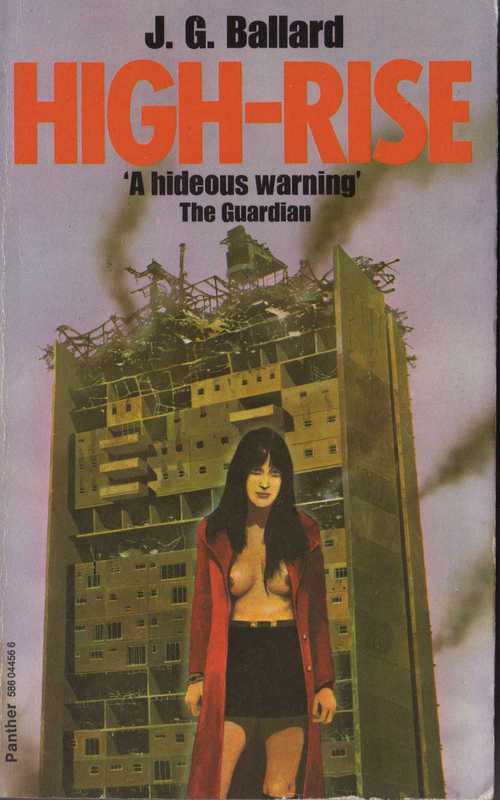
PS: The Postmodernist Generation includes SF authors Philip K. Dick, J.G. Ballard, and Ursula K. Le Guin, and honorary members Kurt Vonnegut (born in the cusp year of 1923), John Brunner and Harlan Ellison, plus SF/postmodernity theorist Fredric Jameson (all born 1934). In his 2005 book, Archaeologies of the Future, Jameson persuasively argues that it requires a tremendous effort to imagine a daily life that is politically, economically, socially, and psychologically truly different from our own. And this effort, Jameson writes, warps the structure of the most interesting science fiction — he singles out Dick, Ballard, Le Guin, and Brunner. More about Jameson’s theories in the next installment of this series, on the Anti-Anti-Utopians.
READ MORE essays by Joshua Glenn, originally published in: THE BAFFLER | BOSTON GLOBE IDEAS | BRAINIAC | CABINET | FEED | HERMENAUT | HILOBROW | HILOBROW: GENERATIONS | HILOBROW: RADIUM AGE SCIENCE FICTION | HILOBROW: SHOCKING BLOCKING | THE IDLER | IO9 | N+1 | NEW YORK TIMES BOOK REVIEW | SEMIONAUT | SLATE
Joshua Glenn’s books include UNBORED: THE ESSENTIAL FIELD GUIDE TO SERIOUS FUN (with Elizabeth Foy Larsen); and SIGNIFICANT OBJECTS: 100 EXTRAORDINARY STORIES ABOUT ORDINARY THINGS (with Rob Walker).

